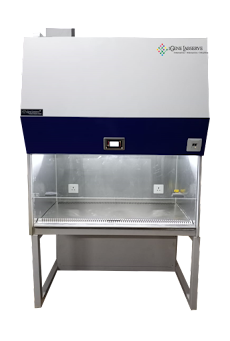Gel electrophoresis is a fundamental technique in molecular biology, widely used for separating and analyzing DNA, RNA, and proteins based on their size and charge. This powerful method enables researchers to gain valuable insights into genetic information, investigate mutations, and perform various diagnostic and analytical applications. In this blog, we will explore the seven essential steps of gel electrophoresis, providing a comprehensive guide for both beginners and experienced scientists.
Step 1: Preparation of Agarose Gel
The journey begins with the preparation of the gel matrix. Agarose, a polysaccharide derived from seaweed, is commonly used to create a porous gel. The concentration of agarose can be adjusted based on the size range of the molecules you are working with. Higher concentrations are suitable for smaller fragments, while lower concentrations are preferred for larger fragments.
Step 2: Melting and Casting the Gel
 After measuring the appropriate amount of agarose, it is melted in a buffer solution and then cast into a gel mold. Comb-like structures are inserted to create wells for sample loading. Once the agarose solidifies, the gel is ready for the next phase.
After measuring the appropriate amount of agarose, it is melted in a buffer solution and then cast into a gel mold. Comb-like structures are inserted to create wells for sample loading. Once the agarose solidifies, the gel is ready for the next phase.
Step 3: Preparing the DNA Samples
Before loading the samples onto the gel, DNA molecules are typically treated with a loading dye that provides density and allows for easy tracking during electrophoresis. The loading dye also contains a tracking dye to monitor the progress of the electrophoresis run.
Step 4: Loading the Gel
Carefully, the DNA samples mixed with loading dye are loaded into the wells of the agarose gel. A DNA ladder, consisting of known-sized fragments, is often included to estimate the sizes of the sample bands.
Step 5: Running the Electrophoresis
The gel is submerged in a buffer-filled electrophoresis chamber, and an electric current is applied. DNA, being negatively charged, migrates towards the positively charged electrode. Smaller fragments move faster through the gel matrix, resulting in separation based on size.
Step 6: Staining and Visualization
After electrophoresis, the separated DNA fragments are invisible. Staining agents, such as ethidium bromide or safer alternatives like SYBR Green, are used to make the DNA bands visible under UV light. Gel documentation systems or gel imagers capture the images for further analysis.
Step 7: Analysis and Interpretation
The final step involves analyzing the gel image. The distance traveled by each DNA fragment is compared to the ladder, enabling the determination of fragment sizes. Researchers can then draw conclusions about the composition and characteristics of the DNA or RNA samples.
Conclusion:
Gel electrophoresis is a versatile and indispensable tool in molecular biology, offering insights into genetic information and aiding various research and diagnostic applications. Mastering the seven steps of gel electrophoresis is crucial for obtaining reliable and reproducible results. Whether unraveling the mysteries of genetic disorders or exploring the intricacies of molecular biology, gel electrophoresis stands as a cornerstone technique in the scientific journey.





